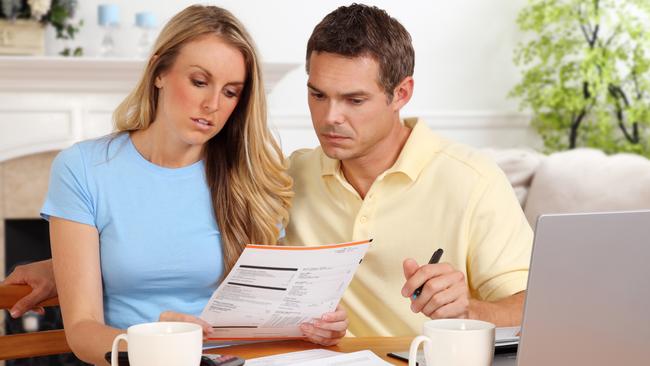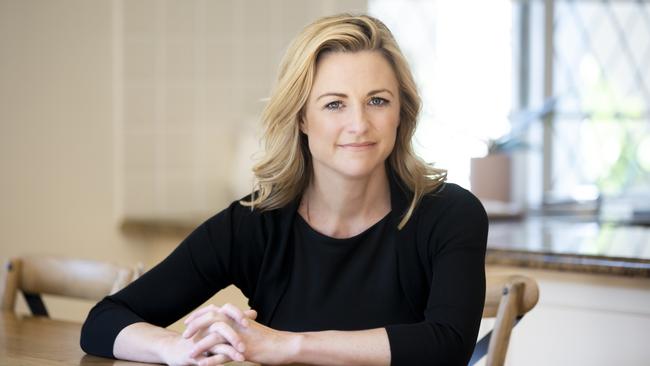Dangerous debt on credit cards rises: here’s how to stop the pain
Wealth-sucking, high-interest debt on credit cards fell for 12 straight years until late 2023, and now households need help.

Half a billion dollars of painful credit card debt has been added to Australians’ finances in just six months as surging living costs prompt people to put more on plastic.
The latest Reserve Bank of Australia credit card figures show credit card balances accruing interest have jumped from $18.1bn to $18.6bn since November 2023, reversing a long-running trend where this type of debt had halved in the previous 12 years.
While credit card debt is okay when repaid within interest-free periods, if left unpaid it slugs cardholders with interest rates three or four times higher than home loan interest rates.
The majority of credit card debt accruing interest lies with personal cards, totalling $17.7bn, and the RBA says this type of debt attracts interest rates averaging 18.3 per cent. On a $10,000 credit card debt, that’s more than $1800 in interest each year.
Canstar group executive financial services Steve Mickenbecker says high living costs have contributed to the recent spike “without a shadow of a doubt”.

“There are still people reducing balances on their credit cards but there are people using their credit card to survive day to day,” he says.
“If you are doing it for 12 months or two years you will find yourself digging a very deep hole.”
Mickenbecker says credit card debts dropped sharply during the pandemic as many people used the ability to withdraw $20,000 from superannuation to repay high-interest debts such as credit cards.
However, there are now concerns that those cash reserves have run out.
“Even before Covid people were running down credit card debt – they got the message that it was high-cost debt,” Mickenbecker says.
Today, people struggling with consumer debt are also using buy now, pay later platforms to juggle repayments when their household income fails to cover costs.
“Unfortunately I think we will now see a blowout,” Mickenbecker says.
He says people who “can’t see a way clear” should seek help from free financial counsellors.
The National Debt Helpline can be contacted on 1800 007 007, while its website ndh.org.au has advice, links for help and a live chat.

Mickenbecker also suggests talking to the bank’s hardship team, consider using zero-interest balance transfer cards and “stop spending on the card”.
“It’s very high-cost debt even if you are on a low-rate card,” he says. “Most of them are still around 14 per cent.”
RateCity research director Sally Tindall says credit card companies have been “creeping up interest rates” and also changing fees and conditions.
“It’s a good example of why it’s important to stay vigilant,” Tindall says.
Some cards have increased interest by up to 1.5 per cent this month, while popular reward cards have been reducing earn rates for points, decreasing their interest free days and increasing annual fees, she says.
Tindall says Covid caused a lot of people to put their personal finances in the spotlight.
“People put a priority on paying down bad debts such as credit card debts,” she says.
“It is still significantly down from where it was at the peak ($37.1bn in 2012) but the concern is that people will feel under pressure to put everyday living expenses on their credit card in order to make their budget balance.
“That’s one of the worst things you can do. A lot of people feel like their back is against the wall when it comes to working out how to pay for the last grocery shop every month or the electricity bill.”
Tindall’s top tips are to ask your bank for a rate reduction on your credit card debt, and consider alternatives such as personal loans, which have lower interest rates and a set time frame to repay the debt rather than the revolving nature of credit cards.

DEEP IN CREDIT CARD DEBT?
Here’s how a lender’s hardship department may help.
• Stop charging you interest.
• Change the payment to an amount you can afford.
• Make longer-term repayment arrangements.
• Give you a few months of making no payments.
• Waive your debt in exceptional circumstances or if you are experiencing extreme hardship.
Source: ndh.org.au





